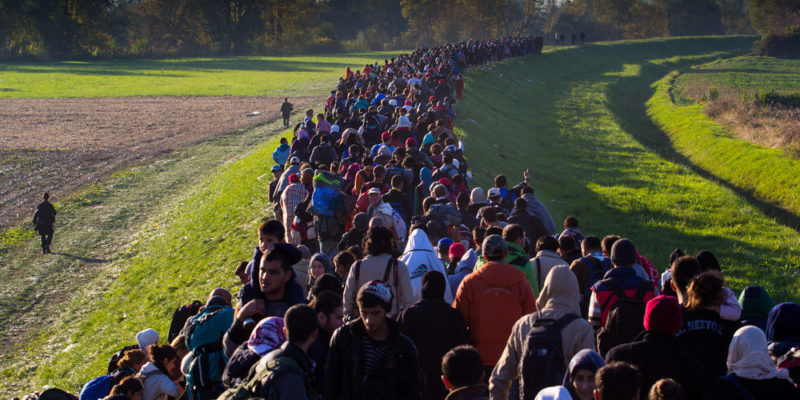We explain what cultural diversity is and its distinctive features. In addition, the areas with cultural diversity and their characteristics.
What is cultural diversity?
Cultural diversity is nothing other than the coexistence in more or less harmonic terms of two or more human cultural aspects in the same political territory or the same nation. This implies reciprocal acceptance between coexisting cultures , jointly generating a variety (linguistic, gastronomic, religious, artistic, etc.) that increases the cultural capital of the country or region.
Hence, cultural diversity is celebrated and appreciated by most countries , despite the fact that in many cases it is the product of unhappy historical processes, such as emigration, wars, military occupations, or others like that.
According to UNESCO, an organization in charge of ensuring the cultural heritage of humanity as a whole, cultural diversity is as necessary for human civilization as biological diversity is for life itself.
The concept of cultural diversity is closely related to those of interculturality and multiculturalism , as well as to the so-called cultural identities.
Characteristics of cultural diversity :
Multiplicity of cultures

There are numerous cultures in the world, understood as different visions of the cosmos , of humanity itself and of the world, with their traditions, imaginaries, languages and representations. Each one is the product of the individual development, geographically isolated, of its people, as well as the historical course of mergers, incorporations and subsequent penetrations that destiny has in store for it.
-
Distinctive features
 Cultures are distinguished in fundamental traits that serve to define their primary characteristics, namely:
Cultures are distinguished in fundamental traits that serve to define their primary characteristics, namely:
- Race. In many cases, racial (phenotypic) similarity is part of the values of a culture, which recognizes its peers based on physical similarity. However, as history progresses and racial mixing occurs, or in the case of nations that are the fruit of miscegenation , this criterion is increasingly difficult to identify in a supposed “purity”.
- Language . The language in which a culture expresses itself is charged with the culture that engendered it (or the one that imposed it) and the historical and cultural accidents that have occurred since then to the societies that speak it.
- Religion. Religiosity, mysticism and rituality, as well as the specific worldview, are distinctive features of the way of seeing the world of a culture.
- Gastronomy. The way of eating, the preparation methods, the favorite dishes and the forbidden foods are all part of the culture.
- Art and folklore. The artistic and folkloric manifestations of aspecific community , their clothing, their initiation rites, in which they reflect their beliefs, values and idiosyncrasies, are part of their cultural manifestations.
- History . The own stories, thetraditional myths , as well as the official history of the ethnic group, nation or region, also constitute an indispensable element for the culture.
Areas of cultural diversity

There are regions with greater cultural diversity than others, among which are:
- Certain Latin American countries. Like Peru , Bolivia or Mexico , countries in which much of the pre-Columbian cultural wealth remains , which in other regions was devastated by the Spanish conquerors or merged in a mestizo melting pot, as in the Caribbean.
- The balkans. The Eastern European region is rich in diverse cultures and varied languages, once brought together by totalitarian governments (such as communist Yugoslavia) and today they can more freely express their differences.
- Asia Minor. Another region of extremely high cultural diversity, where different religions such as Buddhism , Hinduism and the various traditions of Eastern philosophy converge .
- The former USSR. The territory formerly occupied by the Soviet Union of Socialist Republics (USSR) is today a diversity of nations with different histories, cultures and languages.
-
Cultural difference
 Cultural difference is a different concept from cultural diversity, since it supposes the existence of a “norm”, from which “other” cultures differ , often the product of migration or, worse still, as in the case of Latin America. , of original occupants of the region, whose culture was made invisible through conquest and colonization .
Cultural difference is a different concept from cultural diversity, since it supposes the existence of a “norm”, from which “other” cultures differ , often the product of migration or, worse still, as in the case of Latin America. , of original occupants of the region, whose culture was made invisible through conquest and colonization .
Cultural preservation
Many diverse institutions are dedicated to the preservation and propagation of so-called “minority” cultures , that is, those that statistically cannot cope with the media imposition of the most robust or hegemonic cultures. Thus, many rites, languages and traditions are lost over the years.
-
Against diversity
Interculturality

Interculturality is a concept similar to that of cultural diversity, since it supposes the ability of a set of individuals or groups made up of different cultural identities , to negotiate a common understanding without prevailing a culture or point of view that is notoriously above the same. others, through dialogue and horizontal communication .
-
Multiculturalism
International Day
The May 21 is the International Day of Cultural Diversity for Development and Respect.
-
Flag
 Numerous emblems and symbols have been erected to represent cultural diversity, but one of the best known is the Wiphala , the flag of Native American peoples , made up of multi-colored squares (7 colors in 49 squares). It is a national symbol in Bolivia and is recognized as a sign of equality and respect in diversity.
Numerous emblems and symbols have been erected to represent cultural diversity, but one of the best known is the Wiphala , the flag of Native American peoples , made up of multi-colored squares (7 colors in 49 squares). It is a national symbol in Bolivia and is recognized as a sign of equality and respect in diversity.The above content published at Collaborative Research Group is for informational and educational purposes only and has been developed by referring reliable sources and recommendations from experts. We do not have any contact with official entities nor do we intend to replace the information that they emit.
MA student of the TransAtlantic Masters program at UNC-Chapel Hill. Political Science with a focus on European Studies. Expressed ideas are open to revision. He not only covers Technical articles but also has skills in the fields of SEO, graphics, web development and coding. .
Leave a reply
Your email address will not be published. Required fields are marked *Recent post

Sport: What Is It, Types, Risks, Features, Characteristics and Examples

Dogs: Emergence, Features, Characteristics, Feeding and Breeds

Story: Definition, Elements, Structure, Features and Characteristics

